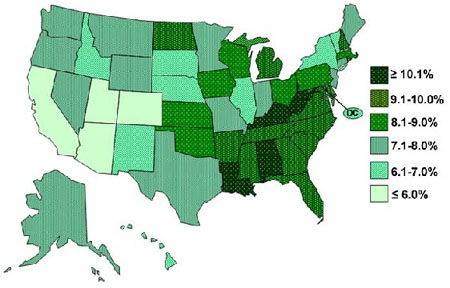
Attention deficit hyperactivity disorder is one of the most common reasons children are referred for mental health services. it affects as many as one in every 20 children. Although boys are three to four times more likely than girls to experience ADHD, the disorder affects both genders.
There are three main types of ADHD. one type is characterized by inattentiveness, one type is characterized by hyperactive or impulsive behavior, and the third type is combined — when children exhibit signs of both types. Symptoms are often unnoticed until a child enters school.
To be diagnosed with ADHD, a child must show symptoms in at least two settings, such as home and school, and the symptoms must interfere with the child’s ability to function at home or school for at least six months. Specialists have agreed that at least six symptoms from the following lists must be present for an accurate diagnosis, and symptoms must begin by age 7.
n Signs of inattentive behavior: has difficulty following instructions; has difficulty focusing on tasks; loses things at school and at home; forgets things often; becomes easily distracted or has difficulty listening; lacks attention to detail, makes careless mistakes or is disorganized; fails to complete homework or tasks.
n Signs of hyperactive behavior: is fidgety; leaves seat when should not; runs or climbs inappropriately; talks excessively; has difficulty playing quietly; is always on the go; blurts out answers; has trouble waiting turn; interrupts.
The presence of some symptoms, however, does not confirm a diagnosis of ADHD. just because a child has a lot of energy or difficulty paying attention in school does not mean the child has ADHD. An accurate diagnosis relies on the presence of a range of symptoms and difficulties that prevent the child from performing at an appropriate level for his or her age and intelligence level. Teachers often first observe these issues, and their input should be considered seriously.
Children and adolescents with ADHD are more likely than children without the disorder to suffer from other mental disorders. About half of all young people with ADHD have oppositional defiant disorder; about a quarter have an anxiety disorder; as many as one-third have depression; and one-fifth have bipolar disorder. Adolescents with untreated ADHD are at higher risk for substance abuse disorders.
Children with symptoms of ADHD should be referred to and evaluated by a mental health professional who specializes in treating children, unless your primary care doctor has experience in treating this disorder. The diagnostic evaluation should include behavioral observation in the classroom and at home. a comprehensive treatment plan should be developed with the family, and, whenever possible, the child should be involved in making treatment decisions. Educational testing should be performed when learning disabilities are present.
Treatment for ADHD is effective for most children. Early identification, diagnosis and treatment help children reach their full potential.
If your child or a child you know is diagnosed with ADHD, be patient. even with treatment, symptoms may take time to improve. Instill a sense of competence in the child or adolescent. Promote his or her strengths, talents and feelings of self-worth.
Remember that the side effects of untreated ADHD (such as failure, frustration, discouragement, social isolation, low self-esteem and depression) may cause more problems than the disorder itself.
For more information, contact the professionals at Acadia Abilene at 325-698-6600 or AcadiaAbilene.com.